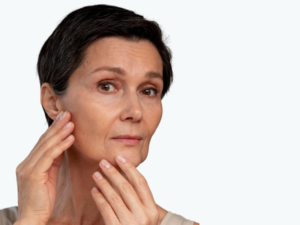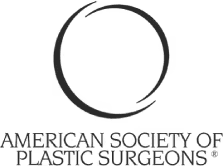Face lifts
The Different Types of Facelifts Available: Which One is Right for You?

As we age, our skin loses elasticity, leading to sagging and wrinkles. A facelift, or rhytidectomy, is a cosmetic surgical procedure that aims to reduce the signs of ageing by tightening the skin and underlying tissues of the face and neck.
However, not all facelifts are created equal. There are several types of facelifts available, each with its own advantages and drawbacks. In this article, we’ll explore the different types of facelifts available in Dubai and help you determine which one might be right for you.
Different Types of Facelifts:
-
Traditional Facelift
The traditional facelift is the most common type of facelift and is often referred to as a full facelift. This procedure involves making an incision that starts at the temples and extends down to the front of the ear, around the earlobe, and up into the hairline behind the ear. The skin is then lifted, and the underlying muscles and tissues are tightened before excess skin is removed. The incision is then closed with sutures or staples.
The traditional facelift is suitable for individuals with moderate to severe sagging of the skin and tissues in the face and neck. This procedure can address multiple concerns, including sagging skin, deep creases, and jowls. However, it is a more invasive procedure than other facelift options, and recovery time can take up to two weeks.
-
Deep Plane Facelift
The deep plane facelift is a surgical procedure that targets the deeper layers of facial tissues, addressing sagging and ageing more comprehensively than traditional facelifts. The deep plane facelift technique helps to minimise scarring. The tension of the lift is on the deep muscles, so less stress is put on the skin, which results in a finer scar
By repositioning and lifting the underlying facial muscles and tissues, the deep plane facelift aims to achieve more natural and long-lasting results, often producing a rejuvenated and youthful appearance. This technique is considered effective in addressing both midface and lower-face ageing concerns.
-
Mini Facelift
A mini facelift, also known as a partial facelift, is a less invasive alternative to the traditional facelift. This procedure involves making smaller incisions around the ears and lifting the skin to tighten the underlying tissues.
The excess skin is then removed, and the incisions are closed with sutures or staples.
The mini facelift is ideal for individuals with mild to moderate sagging in the lower face and neck. It is a quicker and less invasive procedure than a traditional facelift, with a shorter recovery time of around one week. However, the results are typically not as dramatic as those of a traditional facelift.
-
Mid Facelift
A mid facelift, also known as a cheek lift, focuses on the middle of the face, including the cheeks and under the eyes. This procedure involves making incisions around the lower eyelids or inside the mouth, then lifting the skin and tissues in the cheek area.
The mid facelift is ideal for individuals with sagging cheeks, under-eye bags, and deep nasolabial folds. This procedure is less invasive than a traditional facelift, with a shorter recovery time of around one week. However, it is not suitable for individuals with significant sagging in the neck or jowls.
-
Lower Facelift
A lower facelift, also known as a neck lift, focuses on the jowls and neck area. This procedure involves making incisions around the ears and under the chin, then lifting the skin and tissues in the neck and jawline area.
The lower facelift is ideal for individuals with sagging jowls and neck skin. This procedure is less invasive than a traditional facelift, with a shorter recovery time of around one week.
Frequently Asked Questions about Various Face Lift Procedures:
-
What are the different types of face lift procedures available?
There are several types of facelifts, including the traditional facelift, thread lift, mid-facelift, and mini facelift. Each addresses specific ageing concerns and offers unique benefits.
-
How does a thread lift differ from other facelift procedures?
A thread lift is a minimally invasive procedure that involves using threads to lift and tighten the skin. It is known for its quick recovery time and less invasive nature compared to traditional facelifts.
-
What is a mid facelift, and what ageing concerns does it address?
A mid facelift focuses on rejuvenating the middle portion of the face, targeting sagging cheeks and deep nasolabial folds. It provides a more youthful appearance by lifting and tightening the underlying tissues.
-
Can you explain the concept of a mini facelift and its advantages?
A mini facelift is a less extensive procedure designed to address early signs of ageing. It involves smaller incisions and is particularly effective for individuals with mild to moderate facial laxity, offering a quicker recovery compared to more comprehensive facelifts.
-
How long do the results of different face lift procedures typically last?
The longevity of results varies depending on the type of facelift. Traditional facelifts and mid-facelifts generally provide long-lasting results, while mini facelifts and thread lifts may require touch-ups over time.
-
Are these face lift procedures suitable for everyone?
The suitability of a face lift procedure depends on factors such as individual health, skin condition, and desired outcomes. Consultation with a qualified plastic surgeon is crucial to determine the most appropriate procedure for specific needs.
-
What is the recovery time associated with each face lift procedure?
Recovery times differ among face lift procedures. While thread lifts and mini facelifts often have shorter recovery periods, traditional facelifts may require more downtime. Your surgeon will provide detailed post-operative care instructions tailored to the chosen procedure.
Book an appointment with Dr Faisal Salim to discuss your concerns.








